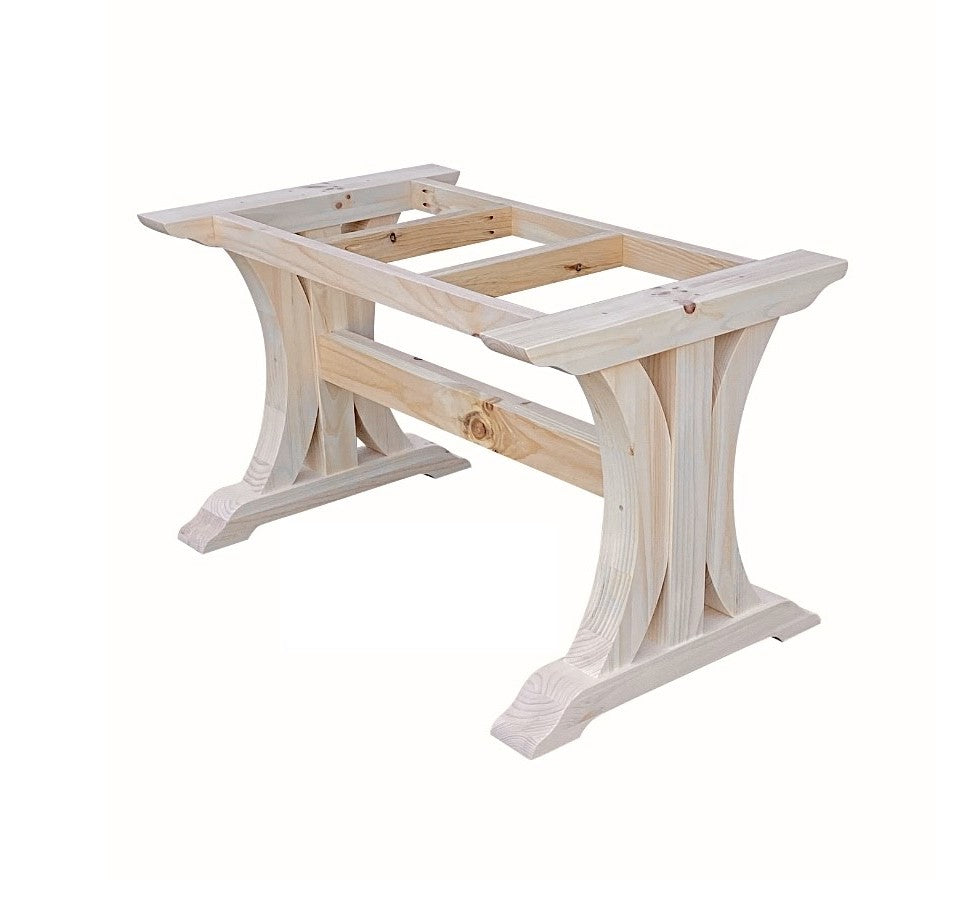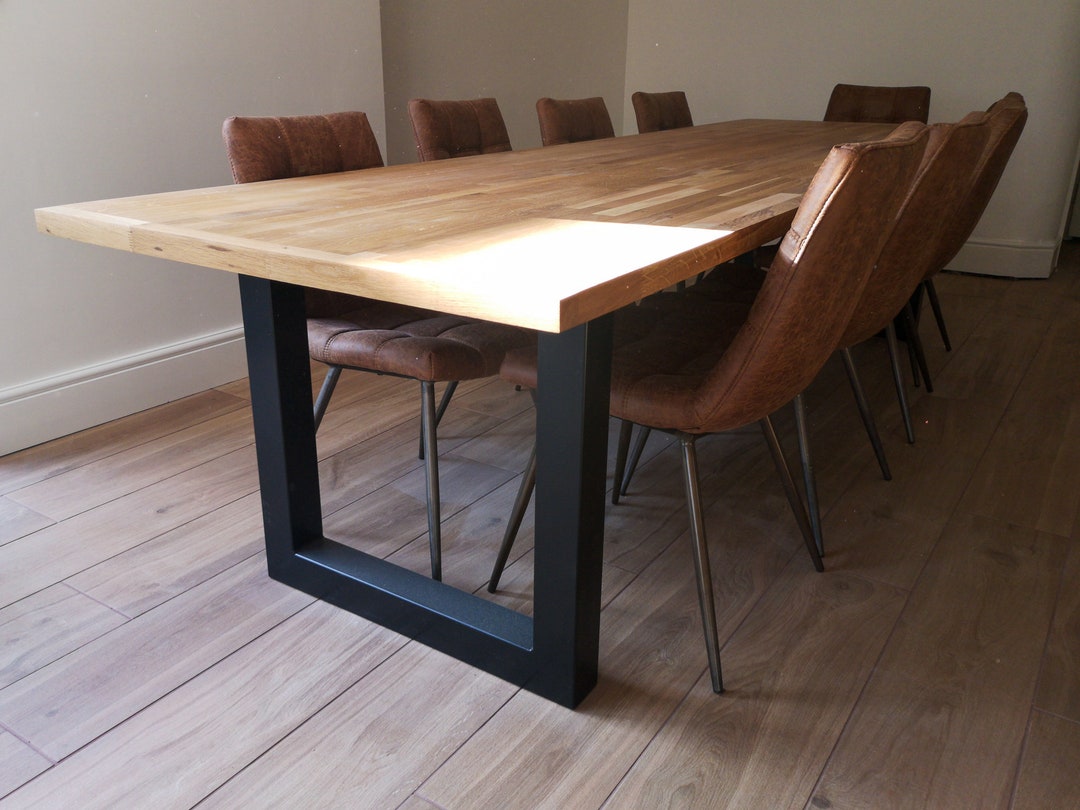Add Charm and Elegance to Your Space with Distinct Dining Room Table Legs
Add Charm and Elegance to Your Space with Distinct Dining Room Table Legs
Blog Article
From Typical to Modern: Discover the Perfect Dining-room Table Legs for Your Style
The choice of eating space table legs plays an essential role in specifying the general personality of your area, bridging the space between standard craftsmanship and modern aesthetic appeals. While classic styles such as cabriole and transformed legs evoke a feeling of ageless sophistication, contemporary designs like hairpin and geometric alternatives present a possibility for striking aesthetic passion. Reviewing the best balance in between these styles requires a nuanced understanding of your existing design and personal taste. As you think about these aspects, the concern continues to be: how can you flawlessly incorporate these varied leg designs to create a harmonious eating experience?
Understanding Table Leg Styles
The variety of dining-room table leg designs can dramatically affect both the aesthetics and performance of the area. Each leg style contributes unique useful attributes and visual components, accommodating varied design preferences and use needs. Recognizing these designs is vital for picking the ideal eating table that aligns with your total indoor layout vision.
As an example, tapered legs offer a clean, timeless appearance that can boost an area's style, while pedestal bases give security and take full advantage of legroom, making them optimal for smaller rooms. Barrette legs, a characteristic of mid-century contemporary design, introduce a commercial flair, permitting an airy, open feeling. Trestle legs evoke rustic appeal, offering robust support and a sense of eternity.
Wooden legs can bring heat and appearance, whereas steel alternatives typically communicate a streamlined, contemporary ambiance. Inevitably, recognizing table leg styles is essential for developing a natural eating location that reflects personal style while ensuring functionality and convenience.
Standard Table Leg Options
When picking dining-room table legs, conventional choices frequently embody timeless elegance and craftsmanship. These layouts reflect a rich heritage and a commitment to quality, making them excellent for those who appreciate timeless aesthetics.
One of one of the most legendary typical leg designs is the cabriole leg, characterized by its graceful rounded form. This style commonly includes attractive carvings and is most typically discovered in Queen Anne and Chippendale furnishings. One more prominent alternative is the turned leg, which boasts a collection of smooth, rounded shapes that offer a traditional look while maintaining security.
In addition, the straight leg, while basic, provides a unadorned and sturdy structure that can mix seamlessly with a variety of tabletop designs. For those attracted to ornate outlining, claw-and-ball feet legs evoke a feeling of splendour and can serve as a sensational focal point in any type of dining space.
Lastly, stand bases, although not purely legs, supply a different standard choice that permits enough legroom and can be perfectly sculpted. Each of these conventional leg designs contributes to the total atmosphere of a dining room, weding function with aesthetic charm.

Modern Table Leg Designs
Modern table leg styles use a diverse variety of styles that stress tidy lines and ingenious materials. These styles typically prioritize functionality while functioning as striking prime focus within an eating room. Minimalist appearances are widespread, with legs crafted from materials such as metal, glass, and engineered timber, which add to a contemporary and ventilated feeling.
One prominent design is the barrette leg, defined by its slender, conical framework that provides security look at here without frustrating the table top (dining room table legs). This design is commonly found in mid-century contemporary furnishings and can effortlessly enhance various table shapes. An additional trend is making use of geometric shapes, where legs might tackle angular or unbalanced forms, adding visual rate of interest and a touch of virtuosity

Blending Styles for Unique Rooms
Often, homeowners look for to develop special eating areas that reflect their personal design by blending various layout components. This technique enables the unification of varied Discover More Here appearances, leading to a harmonious yet distinctive atmosphere. As an example, matching a rustic wooden table with streamlined, contemporary metal legs can develop an attractive contrast that boosts the area's total appeal.
Furthermore, incorporating vintage table legs navigate here with contemporary table tops can evoke a feeling of background while keeping a modern perceptiveness. Such combinations not only display individual preference but likewise encourage imagination, allowing house owners to curate a room that really feels both personal and welcoming.
Color plays a crucial function in this mixing procedure; choosing table legs that match or contrast with the existing shade system can boost aesthetic rate of interest. For example, whitewashed legs can soften the daring of a dark table surface area, developing a well balanced visual.
Tips for Picking the Right Legs
Selecting the right table legs is important for achieving both functionality and aesthetic charm in your eating space. Begin by thinking about the overall design of your area. Traditional settings benefit from legs that include complex makings or transformed designs, while contemporary rooms may require streamlined, minimal styles.
Next, evaluate the elevation and stability of the legs. dining room table legs. Conventional eating tables vary in between 28 to 30 inches in elevation, so ensure the legs match this dimension for convenience. Additionally, robust materials, such as hardwood or steel, can boost security and longevity
Evaluate the leg form as well-- alternatives consist of right, tapered, or stand layouts. Straight legs supply a timeless appearance, while conical legs can add a touch of sophistication. Pedestal bases give enough legroom and are ideal for smaller sized rooms.
Verdict
In recap, choosing the perfect eating space table legs requires careful factor to consider of both standard and modern styles. By integrating leg design, height, and product with the overall decor, a cohesive and welcoming atmosphere can be accomplished.
The selection of dining room table leg styles can dramatically influence both the aesthetics and capability of the area. Ultimately, understanding table leg styles is vital for producing a natural eating location that mirrors individual design while guaranteeing usefulness and comfort.One of the most famous traditional leg designs is the cabriole leg, defined by its graceful bent shape. Straight legs use a classic look, while tapered legs can include a touch of style.In summary, choosing the ideal dining room table legs requires careful consideration of both typical and modern styles.
Report this page